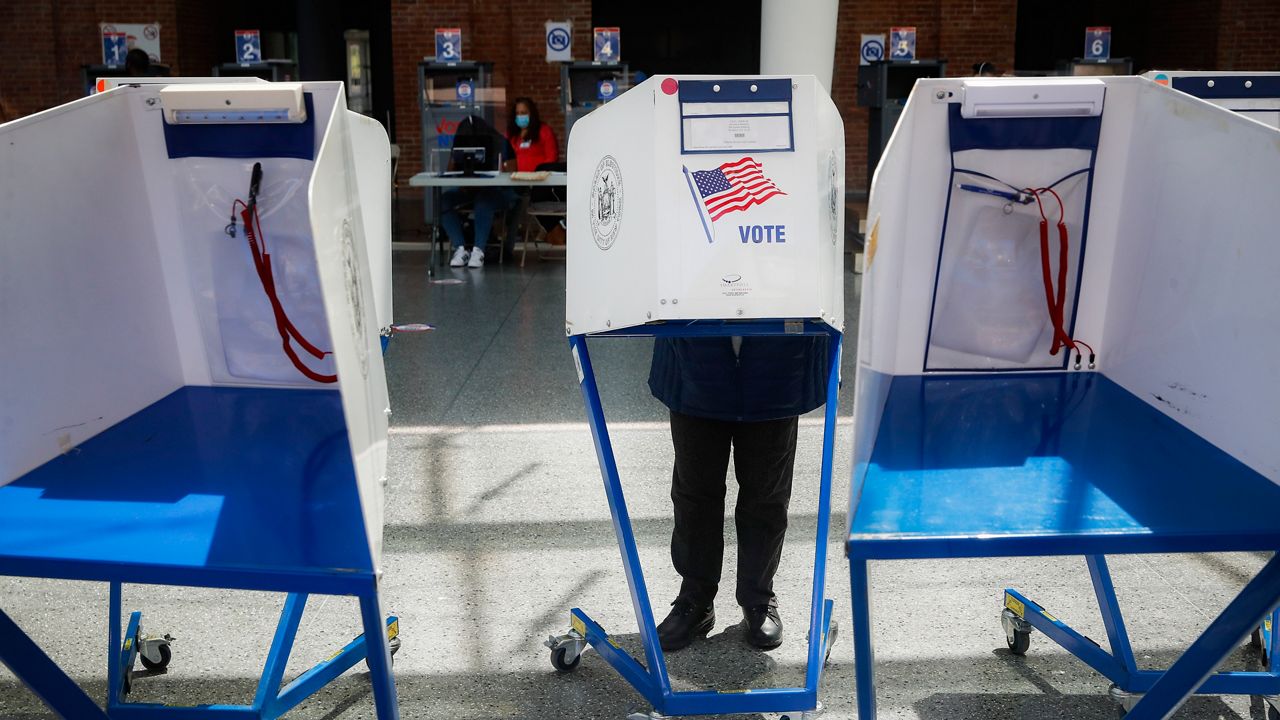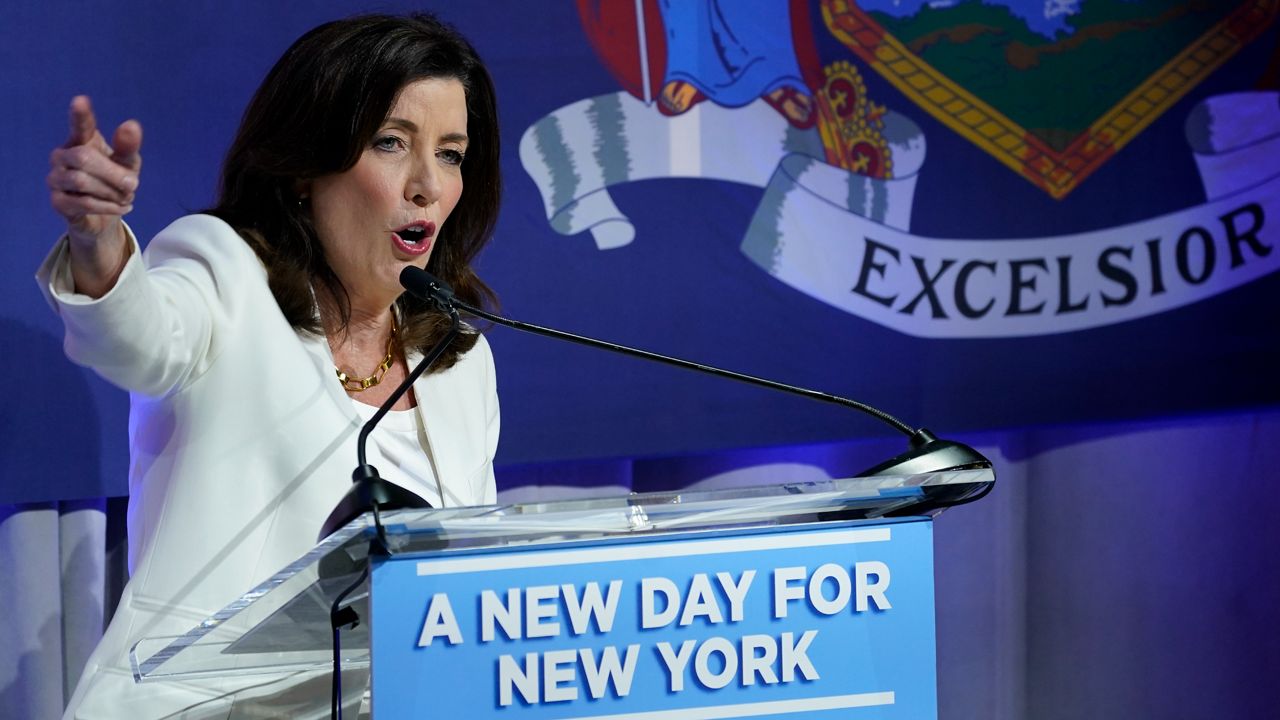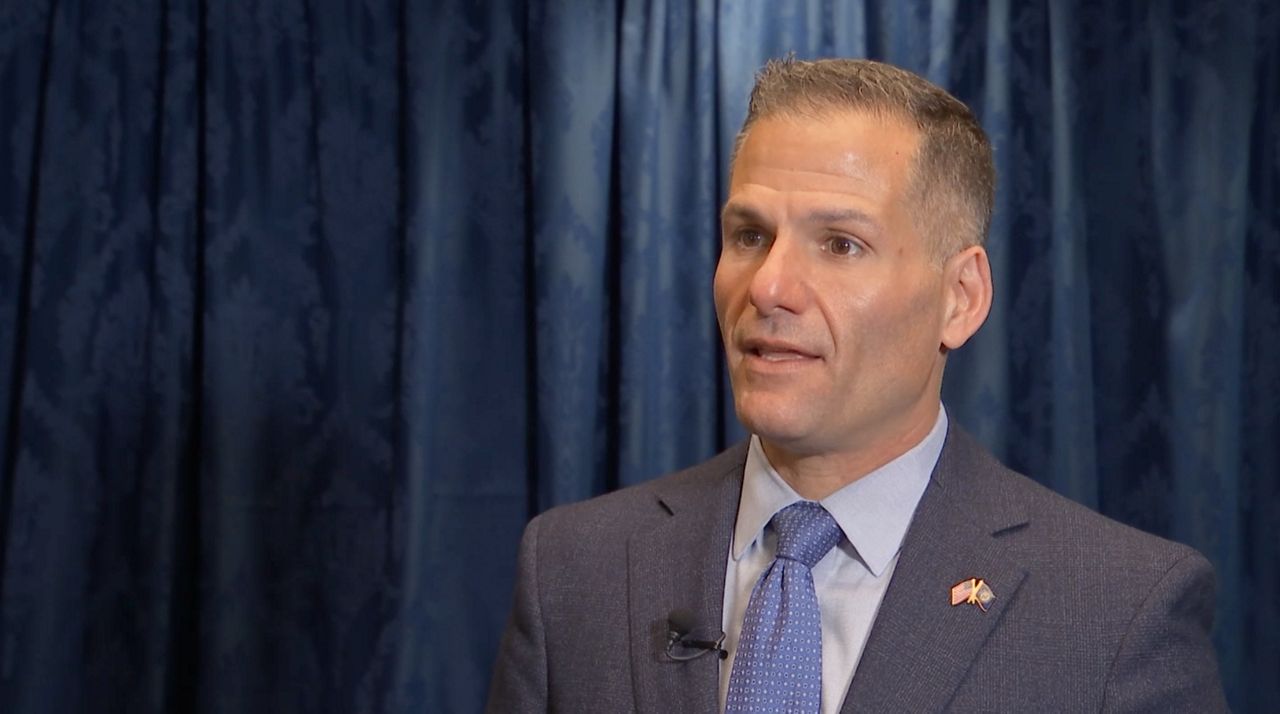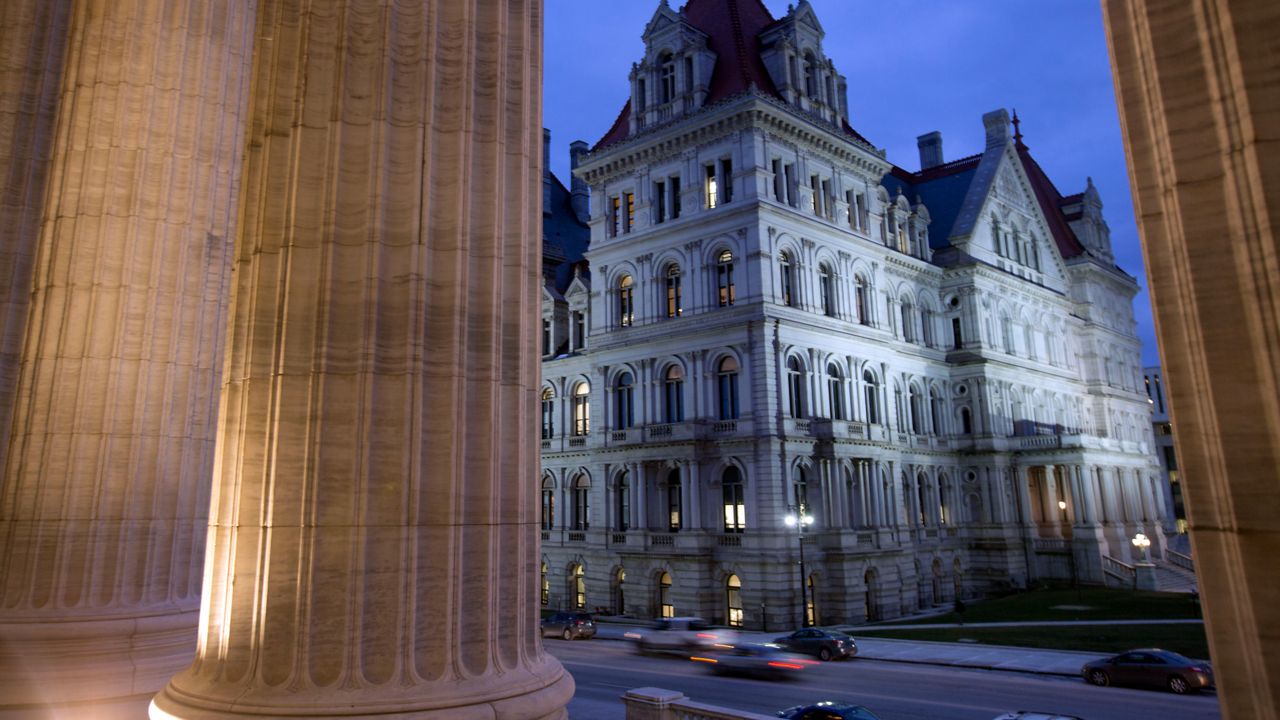When is the primary?
There are two primaries this year after a lawsuit scrambled the state’s redistricting process and pushed back the primary for congressional and state Senate seats until Aug. 23. Assembly, U.S. Senate, and statewide primary elections will be held June 28.
When does early voting begin?
Early voting began Saturday, June 18 and ran every day through Sunday, June 26. Anyone eligible to vote could early vote. For voting times and locations visit the New York City’s Board of Elections website at https://vote.nyc/page/understanding-ballot.
How do I find my polling place?
If you’re a New York City voter, you can enter your address at https://vote.nyc/page/understanding-ballot to find your early voting and Election Day polling place. In most cases early voting and Election Day polling places are separate locations.
Am I eligible to vote in the June 28 primary?
If you registered to vote by June 3, you are eligible to vote in the June 28 primary. There is still time to register for the Aug. 23 primary, but you must do so by July 29.
What do I need to vote?
If you are registered to vote and provided ID when you registered, you do not need ID or any other documentation when you go to vote, according to New York State law. If you did not provide ID when you first registered, you can still vote at a polling location with an affidavit ballot.
Can I take time off work to vote?
New York State law mandates voters with certain schedules that conflict with polling location hours get two hours of paid time off if they do not have “sufficient time to vote.”
“Sufficient time to vote” is defined by the state Board of Elections as four hours before or after your work shift. The example the state provides is a 9 a.m. to 5 p.m. employee whose polling location is open 6 a.m. to 9 p.m. would not be eligible for mandatory paid time off because they would have four hours after their shift to vote.
However, if the shift in that scenario went from 9 a.m. to 6 p.m., employers would be required to provide paid time off because the employee would only have three hours before and after their shift.
Employees are required to give their employers two working days notice if they need to take paid time off to vote. Employers cannot require employees to use any of their personal time or other earned leave time to vote.
If employers refuse or fail to provide an employee with paid time off in circumstances where it was required, the state recommends speaking with a private attorney or contacting the following agencies:
For Wage Payment Purposes:
New York State Department of Labor, Division of Labor Standards
Bldg. 12, Rm. 185C,
State Office Campus, Albany NY 12240
Tel. 888-4-NYSDOL (469-7365)
OR
New York State Attorney General’s Office Labor Bureau
28 Liberty Street
New York, NY 10005
Tel. (212) 416-8700
For Election Law Compliance Purposes:
Contact your County Board of Elections
OR
NYS Board of Elections
40 North Peal St, Suite 5
Albany, NY 12207-2729
Tel. (518) 474-6220
What’s on my ballot?
Every voter registered with the Democratic or Republican parties will be eligible to vote in their party’s June 28 primaries for governor, lieutenant governor, U.S. Senate, state attorney general, state comptroller, and your local Assembly seat.
In Brooklyn, Manhattan, and Queens, voters will also choose civil court judges to run in the November general election. Manhattan voters will also vote for Surrogate Court judges.
Within your respective party, there may also be elections for delegates to the party’s judicial convention, state committee members, district leaders, and county committee members. In most cases, these will be uncontested, but reformers in the Democratic Party are running against county party-backed candidates in some districts.
The primaries for state Senate and Congress will be held Aug. 23.
How do I apply for an absentee ballot?
You can apply in-person at your local county board of elections or by designating another person to deliver your application in-person.
For the June primary, the absentee ballot application period has already passed. You needed to submit your applications by mail, email, or fax by June 13 to your county board of elections. You can also apply online here.
Here are the English and Spanish New York State absentee ballot applications.
Election day, June 28, is the last day for an absentee ballot to be mailed or submitted in-person by your designated representative. If mailed, it must be received by July 5.
Who qualifies for an absentee ballot?
Notably, risk of contracting or spreading COVID-19 is still considered a qualifying reason to request an absentee ballot, effectively allowing all New Yorkers to request one.
According to the state Board of Elections, the following groups of registered voters qualify:
- Absent from your county or, if a resident of New York City absent from the five boroughs, on Election Day.
- Unable to appear at the polls due to temporary or permanent illness or disability (temporary illness includes being unable to appear due to risk of contracting or spreading a communicable disease like COVID-19).
- Unable to appear because you are the primary caregiver of one or more individuals who are ill or physically disabled.
- A resident or patient of a Veterans Health Administration Hospital.
- Detained in jail awaiting Grand Jury action or confined in prison after conviction for an offense other than a felony.
How do I vote with an absentee ballot?
Fill out your absentee ballot like you would any ballot, following the instructions included. Make sure you sign and date the security envelope before returning your ballot.
Absentee ballots can be mailed back or dropped off at a poll site or local Board of Elections office by or on Election Day. If mailing, the ballot must be postmarked by June 28 and received by July 5. The Board of Elections recommends using two stamps to ensure it has enough postage.
What if I requested an absentee ballot and decide to vote at the polls?
You can, but you will be given an affidavit ballot instead of being able to use a polling machine so the Board of Elections can first determine if you are an eligible voter. A law change this year adopted the rule for New York State after chaotic ballot counting in a 2020 upstate congressional race delayed the race being called for months.
Due to a recent change in law, New York State voters are no longer permitted to cast a ballot on a voting machine if they have requested to vote by Absentee Ballot. Voters who have requested to vote by Absentee Ballot can still vote in-person using an affidavit ballot. pic.twitter.com/D7yDz6osb2
— NYC Board of Elections (@BOENYC) June 1, 2022
What happens if I’m turned away on Election Day?
There are a number of reasons you could arrive at your polling place on Election Day and be told you can’t vote.
First, double-check you’re at the right polling place by visiting https://vote.nyc/page/understanding-ballot. If you are and are still being turned away, it is possible you may not have registered in time or, if you recently moved, you haven’t changed your registration to your current address.
Ask poll workers to check if you are registered to vote in another borough. If your poll workers are not being helpful, contact or visit your local elections office, which can be found here.
It is also possible you have been marked an inactive voter, in error by the Board of Elections or because you have not voted in two consecutive federal elections over the course of five years.
If you are still being told you are not on the voter rolls, you can request an affidavit ballot from a poll worker. Filling out this ballot will allow you to attest you are eligible to vote and participate in the primary. The city’s Board of Elections will then verify whether you are eligible or not. If you are, your vote will be counted. If not, they will contact you with a notice you are not eligible and paperwork for you to register for future elections.
Who can I call if poll workers or others are obstructing me from voting?
If you face issues at the polls that cannot be solved by calmly and clearly communicating with poll workers on the ground, you have a number of options.
Government agencies that can help you exercise your right to vote:
- New York Election Hotline: 1-800-771-7755
- The U.S. Department of Justice Voting Rights Hotline: 1-800-253-3931
A coalition of civil rights groups have also put together a series of multilingual hotlines that can help with each step of the voting process:
- English: 866-OUR-VOTE – Lawyers’ Committee for Civil Rights Under Law
- Spanish/English: 888-VE-Y-VOTA – NALEO Educational Fund
- Arabic/English: 844-YALLA-US – Arab American Institute (AAI)
- Asian Languages/English: 888-API-VOTE – APIAVote & Asian Americans Advancing Justice (AAJC)
- The New York Civil Liberties Union also has a voting hotline that can be reached at (212) 607-3300.
Does my vote matter?
Yes! Voter turnout in New York is notoriously low, adding extra weight to the votes of New Yorkers who do show up to the polls. While some primaries for statewide offices feature only one candidate running unopposed, there are competitive races for governor, lieutenant governor, and in the Assembly.
If you’re a first time voter or unsure about how the process works, voting in person may be easier because poll workers will be on hand to answer any questions you may have.
Can I check poll wait times online?
No, currently the city and the state do not offer the ability to check poll wait times online.
Can I bring my dog to a polling station?
Dogs are not eligible to vote and their owners are generally discouraged from bringing them -- or any animal -- to the polls, unless they help with accessibility.
Who is running in the Democratic primary for governor?
Gov. Kathy Hochul faces two challengers, Long Island Rep. Tom Suozzi and city Public Advocate Jumaane Williams, in the June primary for the Democratic gubernatorial nominee.
Who is running in the Republican primary for governor?
Four candidates are on the ballot for the June primary for the Republican gubernatorial nominee. Long Island Rep. Lee Zeldin, who the state party selected as their preferred nominee at their February convention, faces former Westchester County executive and 2014 Republican nominee for governor Rob Astorino, businessman Harry Wilson, and Andrew Giuliani, son of former Mayor Rudy Giuliani.
Who is running in the Democratic primary for lieutenant governor?
Sitting Lt. Gov. Antonio Delgado faces two challengers in his pursuit of a full term in office: activist Ana Maria Archila and former New York City Councilmember Diana Reyna. Archila is running alongside Williams and Reyna is running with Suozzi, though candidates for governor and lieutenant governors are voted on separately in New York.
Who is running in the Republican primary for lieutenant governor?
The only candidate running for lieutenant governor in the June Republican primary is Alison Esposito, a former NYPD deputy inspector selected by Zeldin as his running mate.
Who is running in the Democratic primary for U.S. Senate?
Senate Majority Leader Chuck Schumer is running unopposed in the June primary for U.S. Senate
Who is running in the Republican primary for U.S. Senate?
Joe Pinion, a former Newsmax anchor, is running unopposed in the June primary for U.S. Senate and is the state party’s preferred candidate for the office.
Who is running in the Democratic primary for attorney general?
Sitting Attorney General Letitia James is running unopposed in the June primary for attorney general.
Who is running in the Republican primary for attorney general?
Michael Henry, a Queens attorney, is running unopposed in the June primary for attorney general and is the state party’s preferred candidate for the office.
Who is running in the Democratic primary for state comptroller?
Comptroller Tom DiNapoli, entering his 15th year in office, is running unopposed in the June primary for state comptroller.
Who is running in the Republican primary for state comptroller?
Paul Rodriguez, a Wall Street veteran, is running unopposed in the June primary for state comptroller and is the state party’s preferred candidate for the office.








